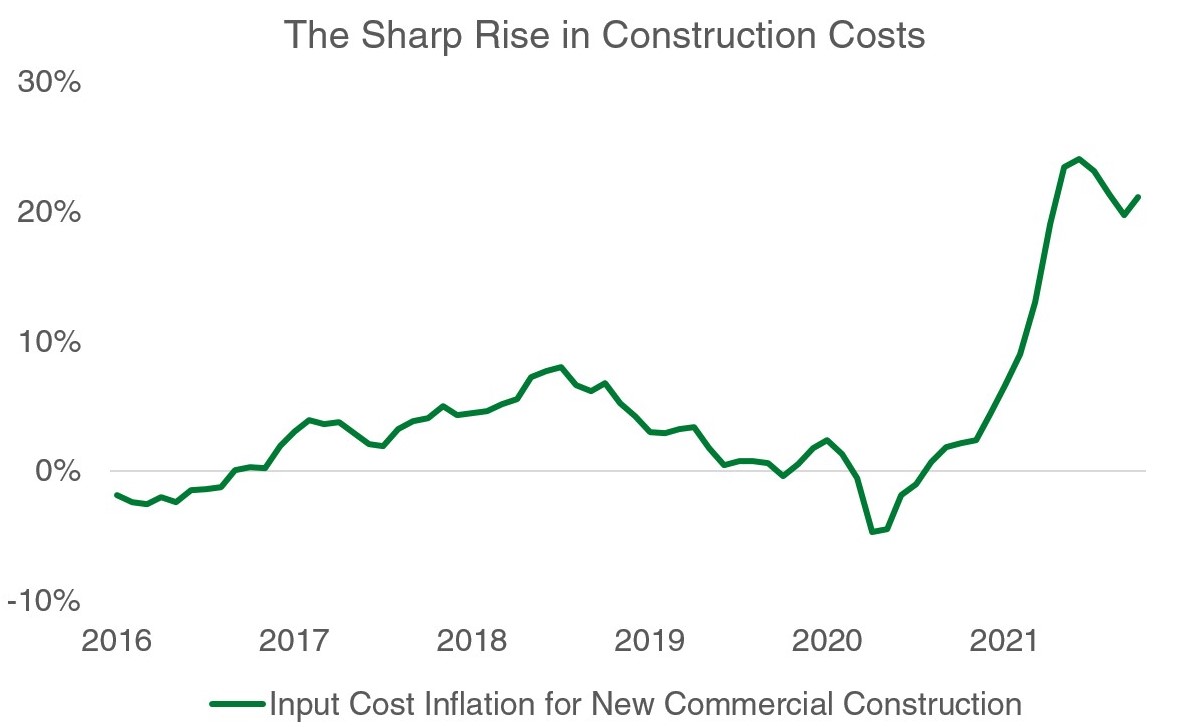The real estate market has done well this year as supply shortfalls and a demand surge sparked sharply higher prices.
As with most industries, the pandemic-induced supply chain disruptions have caused a variety of issues in the construction industry, in ways that may leave a long-lasting impact. Today, demand is far outpacing supply, new construction is struggling to keep up, and increased construction costs are causing short- and long-term price impacts.
With the recent run-in real estate prices in mind, the question becomes, is now the time to trim positions in real estate?
Sale Pending: Why real estate and REITs still make sense today
There simply isn’t enough investible real estate for both buyers and investors, and new construction efforts to boost real estate supply remain held back by a variety of issues.
Growth in new construction is rising, rapidly, but it hasn’t expanded fast enough to meet demand. Supply chain issues are key. Difficulty acquiring raw materials, including lumber for example, have had the most direct impact, causing a litany of project delays and cancellations. This has slowed the industry’s supply response.

Data are from Producer Price Indices on inputs to industries for new nonresidential construction excluding capital investment. Source: Refinitiv (01/2016 – 10/2021).
For projects that have been able to acquire materials, it has not only been challenging to do so, but also cost prohibitive. And worsening the expense challenges are sharply rising labor costs as well. Builders struggled to retain skilled workers after the 2008 Global Financial Crisis, and they are still dealing with the consequences. To maintain the workforce, builders are left with little choice but to boost wages, impacting both work that is already underway, as well as potential work in the pipeline.
These rising expense hurdles can be steep to overcome economically. They are putting drag on the speed and desire of builders to take on new projects, constricting the supply outlook even further. We believe that over the near-term, demand will continue to outpace supply as builders are helpless in remediating those hurdles.
Sold: Planting REIT Roots for the Long Term
Beyond the short-term, real estate’s long-term fundamentals are attractive as well. Material costs may eventually normalize when today’s supply chain disruptions clear. Labor costs, on the other hand, are much more difficult to bring back down. Wage gains tend to be sticky, and once they rise, they rarely fall back down. Builders staffing for new jobs will need to plan for elevated labor expenses from this point going forward, adding long run cost and supply pressures.
Additionally, we are seeing a lack of quality, usable land restricting the ease of bringing new supply to market. In the national aggregate, the availability of economically-feasible development land looks fine, but upon closer inspection, and in target, major metro areas in particular, there’s limited quality land left to develop. We expect this situation to become more acute in the future, exacerbating price appreciate in select markets.
While these higher cost factors are creating a predicament for buyers, they’ve been great tailwinds for real estate investors and owners. Despite the recent price appreciation, we still see additional potential in REITs as an attractive investment category ahead. In our multi-asset class portfolios, we maintain a significant allocation to the real estate market. As always, we are continuing to carefully seek new opportunities while minimizing areas of risk, particularly as the real estate market works through these various supply chain and cost uncertainties.
Our research team continues to monitor these topics and more. If you’re interested in hearing more of our monitoring points and views on an array of investing themes, then subscribe to our insights.
This material contains the opinions of Manning & Napier Advisors, LLC, which are subject to change based on evolving market and economic conditions. This material has been distributed for informational purposes only and should not be considered as investment advice or a recommendation of any particular security, strategy, or investment product. The reader should not assume that investments in the securities identified and discussed were or will be profitable.



